12 Best and Unique Pancit Noodle Dishes in the Philippines | Guide to the Philippines (original) (raw)
It may get confusing traveling around the country just calling for pancit, when there are so many regional varieties to choose from.
Here are some quick things to learn about Filipino noodles and dishes that you can try and add to your travel itinerary in the Philippines.
History of Pancit Noodles
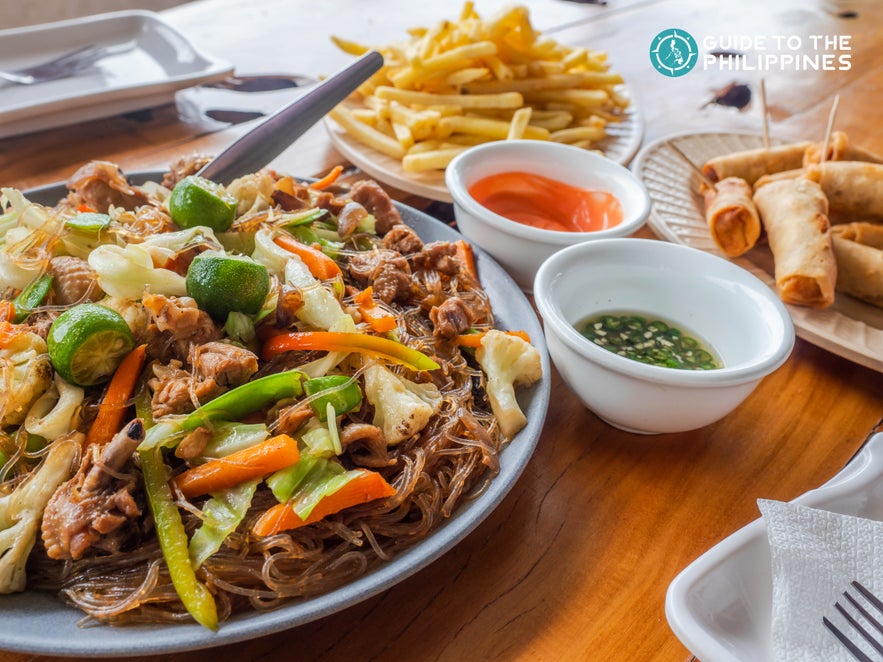
Noodle production and appreciation came to the Philippine shores by virtue of the early trades with Chinese merchants. Over the years, Filipinos have modified these dishes, using local, seasonal ingredients to fit in with local tastes.
In fact, noodle restaurants are said to be the first establishments that were the closest thing to the modern definition of restaurants here in the Philippines.
While Filipino noodle dishes are of Chinese origin, most noodle restaurants before were called by a Spanish-sounding name, “panciteria.” At the time, giving the establishments and dishes Spanish names helped make them sound more upscale.
Pancit Noodles in Filipino Culture

Just like other Asian cultures, Filipinos view noodles as a symbol of long life. Every major occasion and celebration, from birthday parties to Christmas celebrations, will feature at least one pancit dish.
Almost every pancit dish (expect for a few varieties) is served with calamansi, a local citrus fruit. The sour juice serves to brighten the flavors of the dish.
Despite it being substantial, Filipinos rarely view pancit dishes as a full meal unto itself. They are mostly viewed as merienda (snacks).
Unlike in other Asian countries, slurping loudly is not a common way of enjoying noodles in the Philippines.
Almost every pancit dish is enjoyed with another carb, like bread or rice. In fact, some fill a pan de sal (local bread) with pancit and eat it like a sandwich.
While it is not considered pancit, a noodle dish that is wildly enjoyed around the country is the famed, “Pinoy Spaghetti,” which is a dish that features spaghetti noodles topped with a savory sweet red sauce that consists of tomato sauce and banana catsup, ground pork meat and sliced red hotdogs.
It’s usually finished with grated processed cheese. While the dish sounds like a weird combination, it is a must in every Filipino child’s birthday party.
Must-Try Filipino Pancit Noodles
Not sure which pancit dish to try first? Here’s a list of the most common ones you shouldn’t miss when traveling in the Philippines.
1. Pancit Canton

The most common noodle dish found in Filipino homes and restaurants. This dish has egg noodles that are stir fried usually with vegetables like carrots, green beans, shitake mushrooms and cabbage, together with slices of pork.
Sometimes, pork liver and sliced fish balls are added too. The combination is usually seasoned with soy sauce or oyster sauce or a combination of both, while some calamansi is served on top for the diner to season to their liking.
Chef ’s Tip: This dish is also available with other types of noodles like sotanghon (mung bean vermicelli), bihon (rice vermicelli) or misua (angel hair flour noodles).
2. Pancit Palabok/Luglog
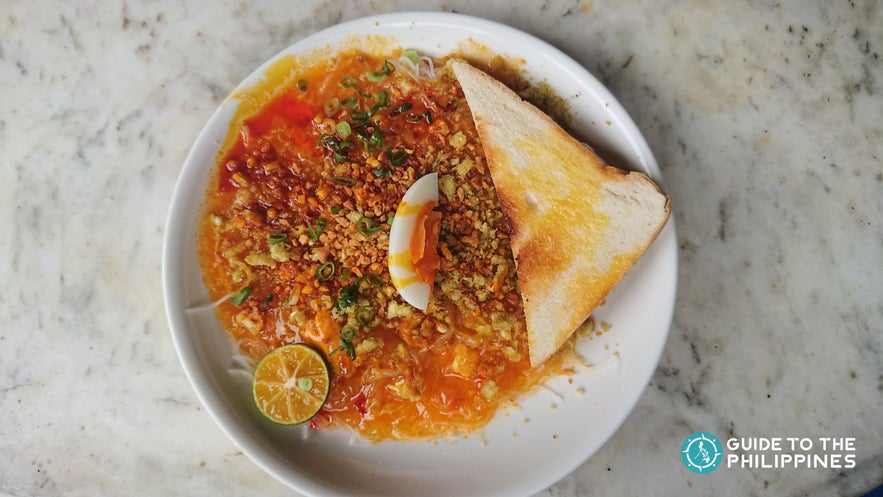
This rice noodle dish is distinct for its rich, thick sauce flavored with shrimp and tinted with atsuete (annatto seeds).
The noodles are then topped with steamed shrimp, spring onions, crisp fried pieces of smoked milkfish and crushed chicharon (fried pork rinds). Again, calamansi is served on top, for the diner to season the dish.
Chef ’s Tip: A different version of this dish is the Pancit Malabon which features thicker rice noodles mixed with the shrimp sauce, but that version is topped with sliced napa cabbage, stewed squid, shrimp and chicharron.
3. Lomi
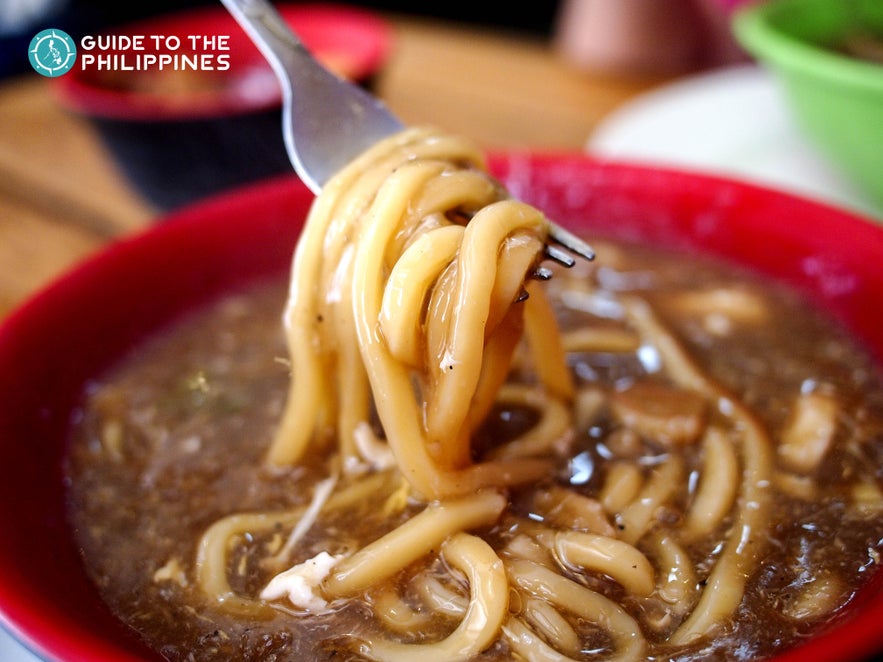
From the Chinese phrase meaning “braised noodles”, lomi has thick egg noodles (almost like Japanese udon but with egg) and is braised in a thick soup with carrots, cabbage and mushrooms, usually with slices of pork, shrimp, kikiam (pork and taro wrapped in tofu skin).
Some varieties have egg mixed into the thick soup as well. The province of Batangas is a famous destination for their Batangas Lomi.
Chef ’s Tip: This is best enjoyed with calamansi extract mixed with some slices of chili labuyo pepper.
5. Albondigas (Misua Meatball Soup)

Photo by angsarap.net
While pancit is of Chinese influence, the ingenious Filipinos combined misua (angel hair flour noodles) with the Spanish dish albondigas (meaning meatballs) to make this Filipino dish.
Misua noodles are cooked in a broth with pork meatballs. Meanwhile, a version of this with shrimp and patola (sponge gourd or loofah) is served commonly in Filipino households, especially during the rainy season.
Chef ’s Tip: A few drops of patis (fish sauce) and a dash of white pepper enhance this dish greatly.
6. Mami
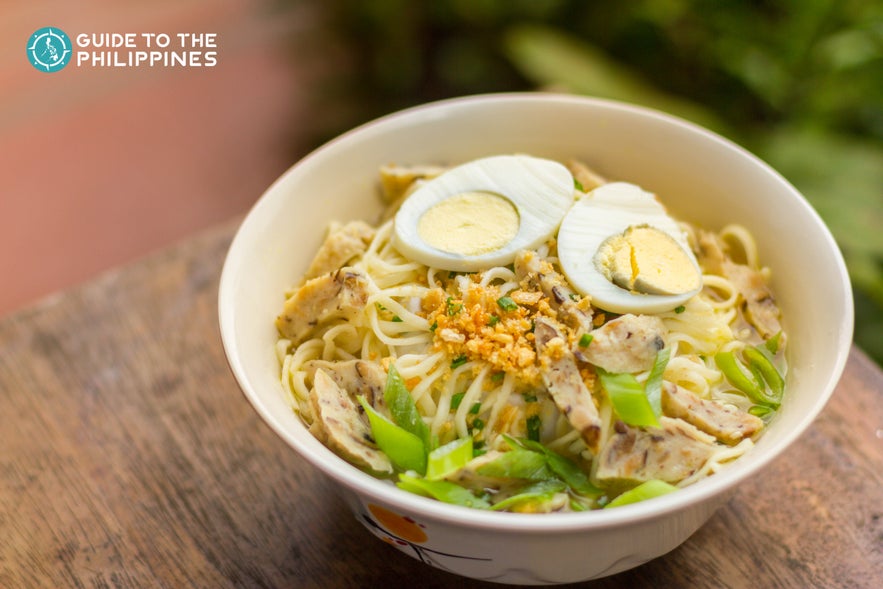
The name is drawn from a Chinese phrase meaning “pork noodles,” but ironically, versions of this dish are mostly made with beef or chicken.
Egg (or sometimes flour) noodles are served with a flavorful broth made from beef or chicken bones, together with slices of napa cabbage, hardboiled egg and shredded chicken or beef. Some variations also add wontons.
Chef ’s Tip: It’s a Filipino tradition to enjoy mami with some siopao (Chinese style steamed buns filled with pork meatball or barbecue pork).
7. Pancit Habhab
Egg noodles are stir-fried with pork, carrots, cabbage and chayote and flavored with soy sauce and/or oyster sauce. Unlike the pancit canton, it is recommended to season these noodles with vinegar instead of calamansi.
This is traditionally served on a banana leaf, without utensils. Just bring the banana leaf package up to your mouth and slurp the noodles!
If you want an authentic pancit habhab eating experience, then you should go to Lucban, Quezon where it originated and are made from scratch.
Chef ’s Tip: To ease the pressure of one’s slurping efforts, slightly folding the banana leaf package helps form a funnel. That, combined with a slight tilt down towards one’s mouth, helps facilitate the movement of the noodles.
Unique Filipino Pancit Noodles in the Philippines
Want to explore more pancit dishes in the Philippines? Check out these unique varieties!
1. Pancit Choco En Su Tinta
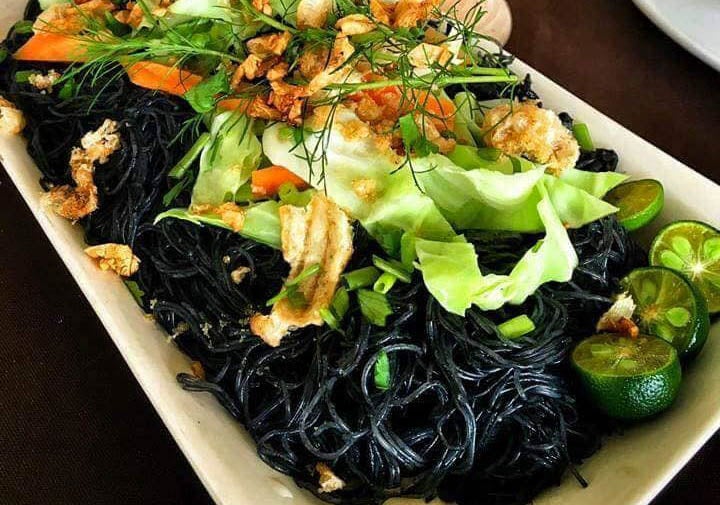
Photo by Asiong Caviteño Restaurant
A classic Cavite dish also called “Pancit Pusit”. The rice noodles are cooked with squid and squid ink together, giving the noodles a beautiful black color, unlike any other Filipino noodle dish.
It’s topped with cabbage, carrots, chili, kinchay (Chinese celery) and chicharon. When it’s in season, kamias fruit (bimbing) is added to give a zesty flavor to the noodles.
2. Kinalas

Almost like a beef mami, this version mostly found in the Bicol region has the egg noodles served with a flavorful beef broth made from braising parts of the beef head until deliciously tender or falling off the bone as the name suggests.
It is usually served with a hard boiled egg and a mysterious, enigmatic brown sauce, whose recipe and ingredients most vendors keep secret.
3. Pancit Henoy
Named “Henoy” after national hero General Emilio Aguinaldo, this noodle dish from Cavite is said to be his favorite. A combination of egg and rice noodles are cooked in broth with shrimps, calf livers, white and napa cabbage, patola and thickened with glutinous rice flour.
While it is delicious, it may also be difficult to find as restaurants very seldom serve this variety.
4. Pancit Batil Patung
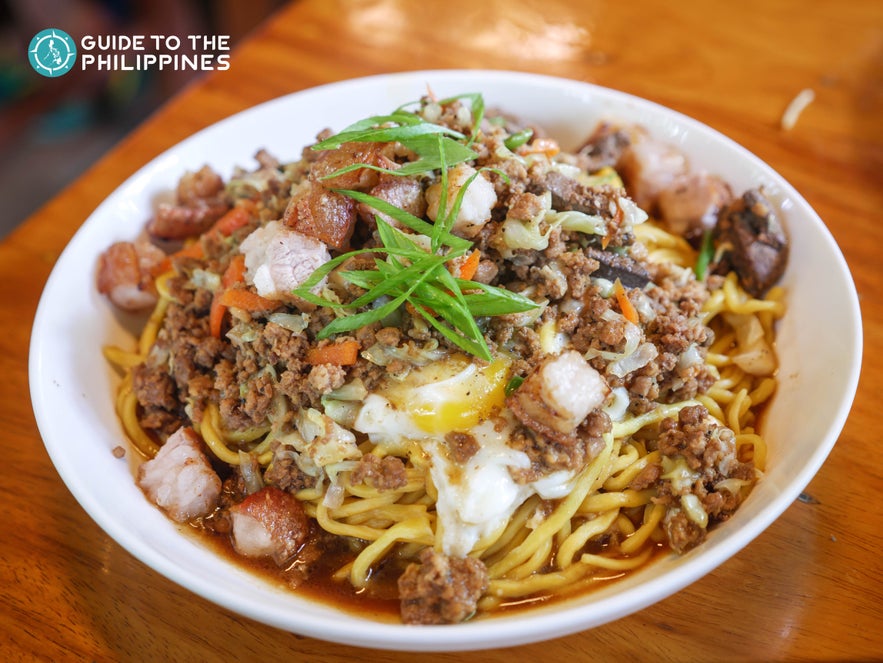
A specialty of the Northern Luzon provinces like Tuguegarao, the slightly thicker egg noodles in this dish are traditionally stir-fried with minced carabeef (buffalo meat), beansprouts and spring onions. Most versions serve either a fried or poached egg on top.
A thick brown sauce with a beaten egg is served on the side, which is then poured onto the noodles. Then, the diner also gets a combination of chopped onions, soy sauce, vinegar, calamansi and chillies to season the noodles even more.
5. Pancit Puso
Another Cavite noodle dish is Pancit Puso. A combination of egg and rice noodles are cooked with slices of pork, cabbage, carrots and green beans, tinted with atsuete. Then, banana blossoms are braised in vinegar and added to the dish, giving the noodles a bright, zesty flavor, while adding another texture element.
Time to Go Pancit Noodles Hunting in the Philippines!
A list of varieties of pancit noodles may look impressive already, but that is barely scratching the surface. Several other pancit varieties from other provinces have yet to be listed here, and this does not include special varieties that differ from family to family.
Perhaps, the real question to ask is not whether one should eat pancit when one travels around the Philippines, but instead how many different pancit varieties can one enjoy on every trip to the country.